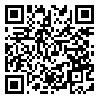Volume 7, Issue 4 (Winter 2025)
Iran J Health Insur 2025, 7(4): 255-264 |
Back to browse issues page
Download citation:
BibTeX | RIS | EndNote | Medlars | ProCite | Reference Manager | RefWorks
Send citation to:



BibTeX | RIS | EndNote | Medlars | ProCite | Reference Manager | RefWorks
Send citation to:
Fazli F, Monavarian A, Jabarzadeh Y. Designing a Transformational Leadership Model in the Digital Era: The Case Study of Insurance Organizations. Iran J Health Insur 2025; 7 (4) :255-264
URL: http://journal.ihio.gov.ir/article-1-354-en.html
URL: http://journal.ihio.gov.ir/article-1-354-en.html
1- Department of Public Administration, Aras International Campus, University of Tehran, Tehran, Iran
2- Department of Public Administration, Faculty of Management, University of Tehran, Tehran, Iran
3- Department of Management, Faculty of Economics and Management, University of Tabriz, Tabriz, Iran
2- Department of Public Administration, Faculty of Management, University of Tehran, Tehran, Iran
3- Department of Management, Faculty of Economics and Management, University of Tabriz, Tabriz, Iran
Abstract: (1710 Views)
Introduction: Given that transformational leaders are key elements in developing an organization's digital culture, they must be able to master the types of skills needed to guide followers to work in a digital environment. However, few studies have been conducted on digital transformational leadership, which indicates a theoretical gap in this area. Therefore, the purpose of this article was to design a transformational leadership model in the digital age in insurance organizations.
Methods: The research method was a mixed exploratory approach. In the qualitative section, based on thematic analysis, the components of the transformational leadership model in the digital age were identified. The data collection tool in this section was an interview with a group of experts. In the quantitative section, a transformational leadership model in the digital age was designed. Data analysis in the quantitative section was based on confirmatory factor analysis and interpretive structural modeling. Data collection in the quantitative section was based on two questionnaires.
Results: The statistical population in the factor analysis section was all managers and experts of the Health Insurance Organization with a sample of 175 people, and in the interpretive structural modeling section, the group of experts in the qualitative section. The research findings in the qualitative section showed seven main themes and thirty-four sub-themes.
Conclusion: The results of confirmatory factor analysis indicate the suitability of each of the confirmatory models. Also, the results of interpretive structural modeling show that the developed model has five levels, and the components of each row have a direct and indirect effect on other levels.
Methods: The research method was a mixed exploratory approach. In the qualitative section, based on thematic analysis, the components of the transformational leadership model in the digital age were identified. The data collection tool in this section was an interview with a group of experts. In the quantitative section, a transformational leadership model in the digital age was designed. Data analysis in the quantitative section was based on confirmatory factor analysis and interpretive structural modeling. Data collection in the quantitative section was based on two questionnaires.
Results: The statistical population in the factor analysis section was all managers and experts of the Health Insurance Organization with a sample of 175 people, and in the interpretive structural modeling section, the group of experts in the qualitative section. The research findings in the qualitative section showed seven main themes and thirty-four sub-themes.
Conclusion: The results of confirmatory factor analysis indicate the suitability of each of the confirmatory models. Also, the results of interpretive structural modeling show that the developed model has five levels, and the components of each row have a direct and indirect effect on other levels.
Type of Study: Research |
Subject:
Special
Received: 2024/12/28 | Revised: 2025/05/7 | Accepted: 2025/02/25 | ePublished: 2025/03/17
Received: 2024/12/28 | Revised: 2025/05/7 | Accepted: 2025/02/25 | ePublished: 2025/03/17
| Rights and permissions | |
 |
This work is licensed under a Creative Commons Attribution-NonCommercial 4.0 International License. |






